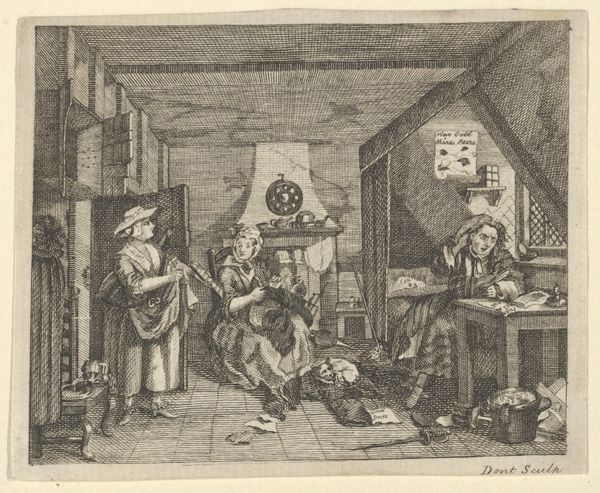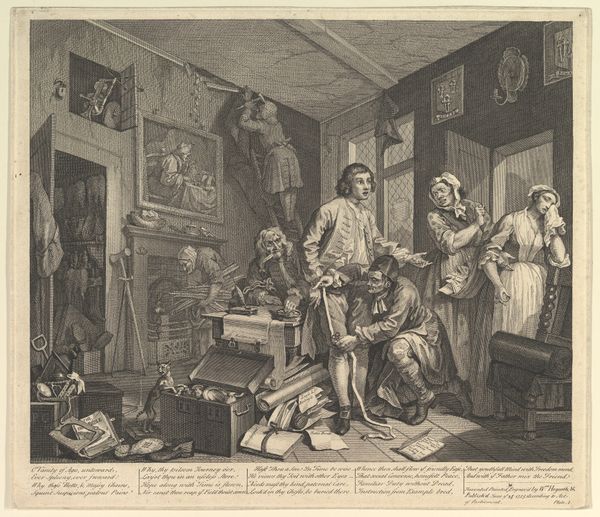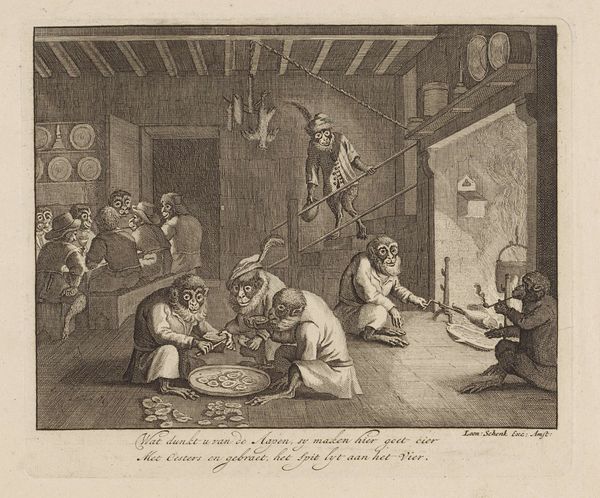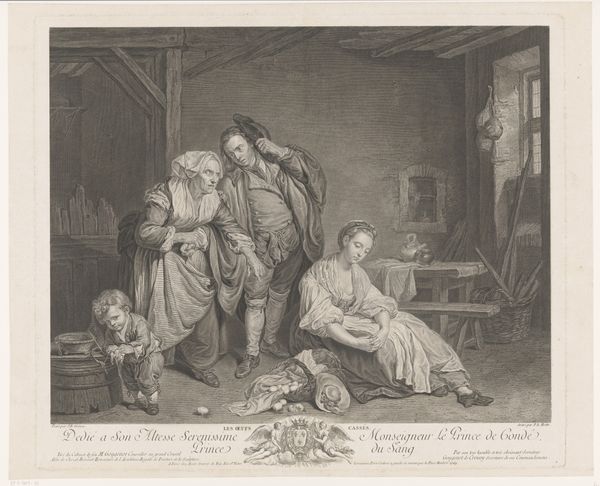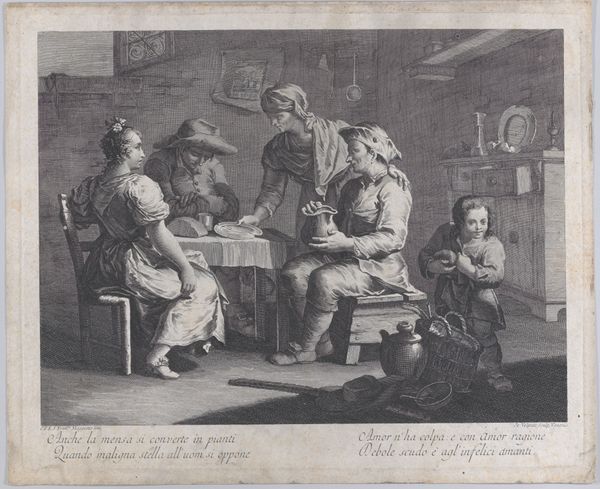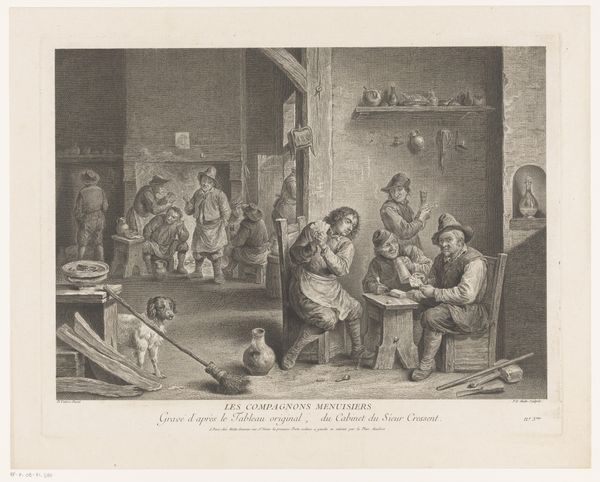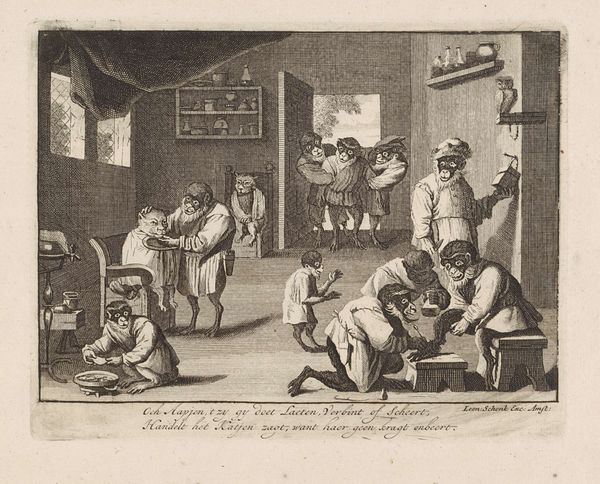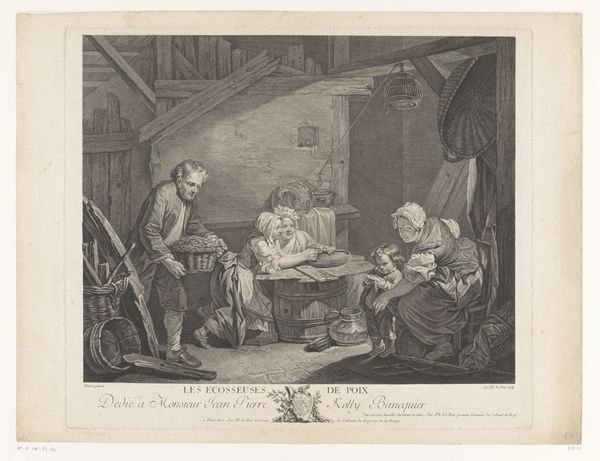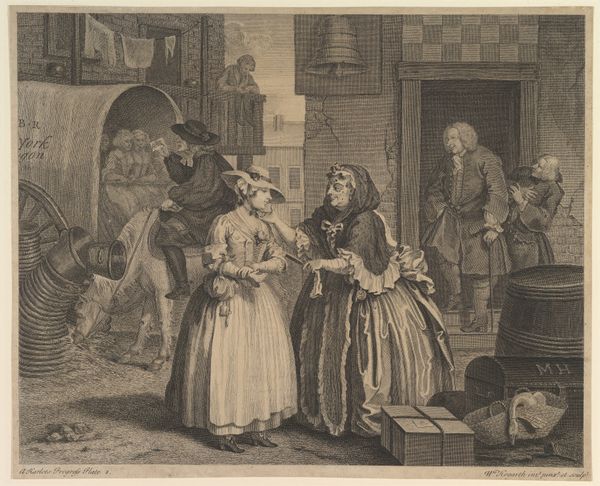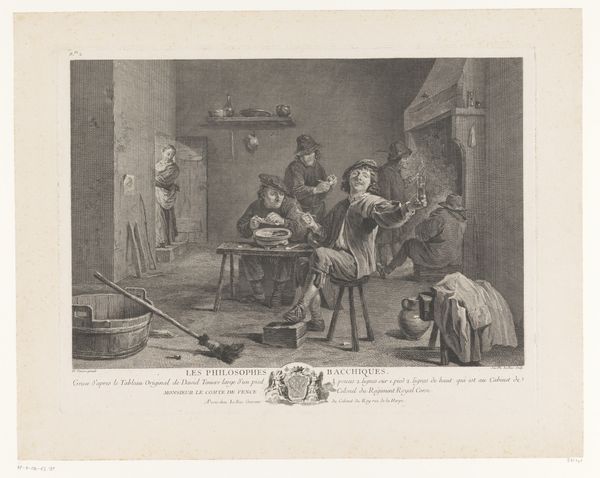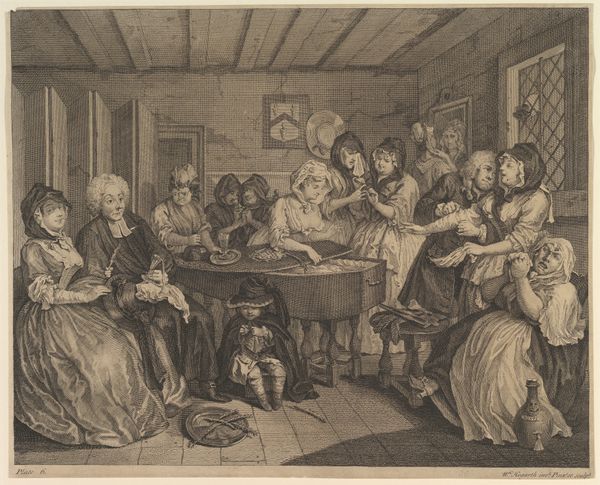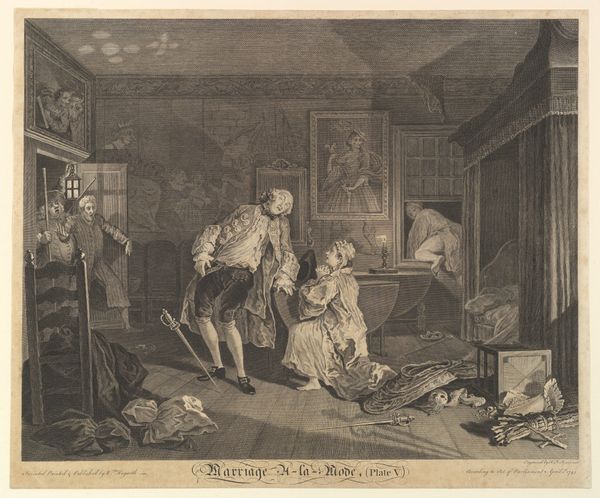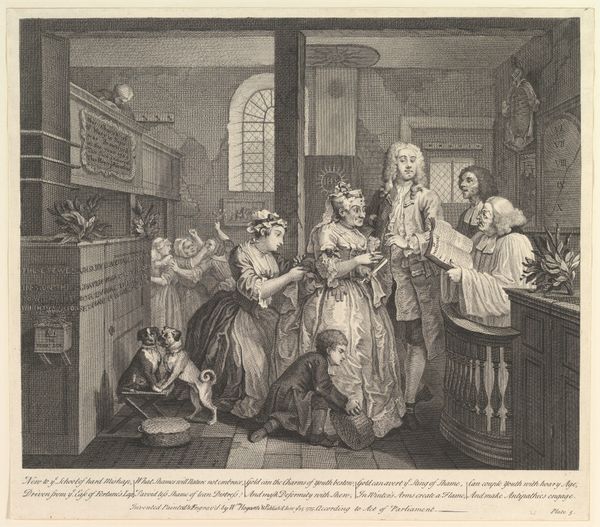
drawing, print, engraving
#
portrait
#
drawing
#
narrative-art
#
baroque
# print
#
dog
#
figuration
#
men
#
genre-painting
#
history-painting
#
academic-art
#
engraving
Dimensions: sheet: 13 7/8 x 15 7/8 in. (35.3 x 40.4 cm)
Copyright: Public Domain
Curator: Here we have William Hogarth's engraving, "The Distrest Poet," created in 1737. It’s currently housed at the Metropolitan Museum of Art. What are your first impressions? Editor: Utter chaos, but a beautiful chaos! It’s cramped, cluttered, and filled with this wonderful sense of frustrated energy. He seems to be a poet in deep distress, indeed! Curator: The image captures a very specific critique. Hogarth situates this impoverished poet within the context of patronage and the social hierarchies that often stifled artistic creation. We can analyze this from a postcolonial perspective, examining the ways systems of power influence artmaking. Editor: Oh, absolutely! But I also just want to hug the poor guy. Look at the tattered clothes, the neglected room. There's even a dog scavenging for food. It speaks to me of the everyday struggle—the price some pay for passion. I’ve definitely been there, minus the wig! Curator: Notice, too, the wallpaper. Hogarth is making a commentary on authorship. The poem pasted on the wall is plagiarized from Alexander Pope. Hogarth uses this detail to challenge conventional notions of originality. The woman to his left extends an unitemized bill of some kind as he is clearly unable to work with such noise and distraction. The setting critiques the lack of support structures for the arts. Editor: And the light, almost mocking his torment. A little ray peeks through the window to spotlight his suffering! It’s like a Renaissance painting turned on its head! The light is not enlightening; it’s spotlighting despair! Curator: His attire reflects this academic disillusionment too. Look how it clumsily references academia with the long flowing white robe, however he has forgone any wig to accompany this garment; signaling this person's estrangement from academia and education despite obvious influence from the fields. Editor: True. The detail and visual storytelling! It’s tragic and hilarious. I leave with feeling very sad, for an obviously talented yet suffering person, whose vision has gone astray to some unfortunate circumstances.
Comments
No comments
Be the first to comment and join the conversation on the ultimate creative platform.
